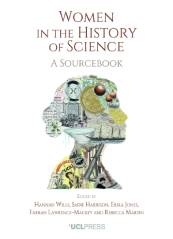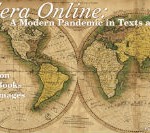August 2016
Globalization creates new challenges to health. Events, such as the ebola and zika outbreaks and refugees seeking better conditions of life, strengthen the idea of health as a matter of national security.
We invited Patrick Zylberman, chair of the history of health at the Ecole des Hautes Etudes en Santé Publique, Paris, to discuss issues related to the impact of war, religion and migration in global health.
According to your book [1], since the turn of the century public health may have shifted partially from prevention to security. May national security really be a problem to public health?

Patrick Zylberman has published several articles and books about health, globalization and security.
On 6 August 2014, Ellen Johnson Sirleaf, the president of Liberia, solemnly declared that, since Ebola was spreading like wildfire, the problem was not just an issue for health and medicine; it had become a matter of national security [2].
Having had its police and army attacked by the virus, its resources in terms of expertise and care close to naught, the Liberian state, brought to its knees, was looking into the abyss.
Two days later, the World Health Organization finally decided to proclaim a ‘global emergency’; and the White House realized the scope of the disaster. As Médecins sans frontières noted in the moment, ‘social unrest and fears of state collapse ran rampant’ [3]. An epidemic pushing the state on the brink of apocalypse? Certainly it can happen, and the 2014 Ebola crisis in West Africa makes out a strong case for such a perspective.
Likewise the open society public health has its enemies: religious fundamentalists or social networks, for instance. To what extent these have the power to block public health policies, immunization campaigns in particular?
We must consider that, today, public health contains far more dimensions than the mere sanitary ones. Religion often interferes, for instance, on the pretext that one should not disturb divine Providence.
See Edward Jenner, inventor of the vaccine against smallpox in the eighteenth century. Very quickly his vaccine was opposed on theological grounds: God’s Providence disturbed, and a product made from animal origin (heifer’s lymph).
Two centuries later, in 1995, in the Philippines, movements anti-abortion attacked, with the support of the Catholic Church, antitetanus immunization, allegedly a global conspiracy to sterilize women with the collusion of the WHO. In Nigeria or Pakistan, Muslim fundamentalists checked vaccination against polio, not hesitating to kill vaccinators.
To what extent are conspiracy theories inherent to epidemics? In 2009, one could hear that H1N1 was an authentic creation of the UN and WHO secretly seeking to destroy half of the humanity. Beliefs and preferences are under pressure of public debate and media. Still has the impact of social networks on public opinion been evaluated ever?
One promising attempt to tackle this question is a study of the tweet flows during the immunization campaign against the 2009 pandemic flu [4]. Out of two million tweets (mainly from the U.S) containing hashtags such as “H1N1” or “swine flu” harvested between May 1 and December 31 (an average of 600 tweets per day), 5 395 have been analyzed. Almost 13% of these tweets spread jokes or sarcasms; 12 % expressed worrying; 10% asked questions; 4.5% only spread disinformation (described by keywords such as “conspiracy”, “toxin” or “autism”).
So there seem to be no overload of “disinformation”. If there was, arguably, some increase in social networks activity during the immunization campaign, it was not the tsunami we are told sometimes. More important, and much more worrying was the lack of shared links to official websites, CDC or WHO (1.5% of the tweets shared such a link). A sad illustration of the meagre trust in health authorities.
Nowadays, in war-torn zones, public health facilities and immunization campaigns are frequently a target of choice. Is this one more woeful development to our new world of savage wars?
I don’t think so. It has been said that today’s armed conflicts are essentially wars on public health” [5]. Civilian populations are the first war casualties. Since the wars in Abyssinia and Spain during the 1930s until the first war in Chechnya (1994), 80% of the total 20 million persons killed and 60 million wounded in various conflicts have been civilians.
Three out of five have been children. In the 1970’s-1990’s, the most intense war zone in Africa lies at the heart of the continent, which is also the epicenter of new diseases (Ebola) and epidemics (HIV/AIDS).
Between 1982 and 1986, fighting has destroyed more than 40% of Mozambique’s health centers. By interrupting activities related to maternal and child care, war increases mortality and the number of premature births. And it reduces vaccination coverage, not to mention its long-run effects, such as outbreaks of malaria.
The re-emergence of polio in Syria, a country polio-free since 1995, is due to attacks against medical and sanitary facilities and to the denial of vaccine and vaccination.[6] On the 1,919 health centres across the country, 652 have been destroyed or closed; more than half of children born since the beginning of the war may be completely unvaccinated.
Assad’s government keeps denying every public health problem in the Northern part of the country, which is in the hands of the various oppositions. For example, in 2009, in an outbreak of cholera, doctors were imprisoned for calling the disease “cholera”.
Denying good sanitary living conditions – clean water and food – makes children more vulnerable; the want of immunization pushes populations to forcibly migrate, spreading the infection across the whole region and so putting neighbouring countries at risk.
[1]. See Zylberman P, Tempêtes microbiennes. Essai sur la politique de sécurité sanitaire dans le monde transatlantique, Paris, Gallimard, 2013.
[2]. On September 9, Liberian minister of Defence sounded the alarm again : ‘Liberia’s existence is seriously at risk’, Libération, 9 septembre 2014.
[3]. Médecins Sans Frontières, ‘Pushed to the Limit and Beyond: A Year into the Largest Ever Ebola Outbreak’, (Paris: March 2015).
[4]. Chew C., Eysenbach G. (2010) Pandemics in the Age of Tweeter: Content Analysis of Tweets during the 2009 H1N1 Outbreak. PLoS ONE 5(11): e14118.
[5]. Perrin P, The Risk of Military Participation, in Leaning J, Briggs S M, Chen L C (eds.), Humanitarian Crises. The Medical and Public Health Response, 1999, p. 311.
[6]. Sparrow A, Syria’s Polio Epidemic : The Suppressed Truth, The New York Review of Books, February 20, 2014 ; Sparrow A, Syria : The Other Threat, The New York Review of Books, August 12, 2014.
Read about global health in HCS-Manguinhos:
Ferreira, José Roberto et al. International cooperation in health: the case of Fiocruz. Hist. cienc. saude-Manguinhos, Jun 2016, vol.23, no.2, p.267-276. ISSN 0104-5970
International cooperation in health: the case of Fiocruz
Fiocruz as an actor in Brazilian foreign relations in the context of the Community of Portuguese-Speaking Countries: an untold story. Hist. cienc. saude-Manguinhos, Mar 2015, vol.22, no.1, p.153-169. ISSN 0104-5970
For more articles about south-south cooperation see the latest issue of HCSM: Bioethics and global health in the Americas.











